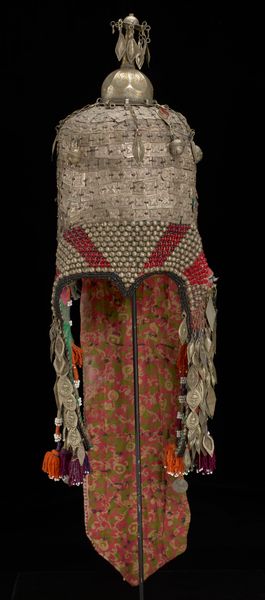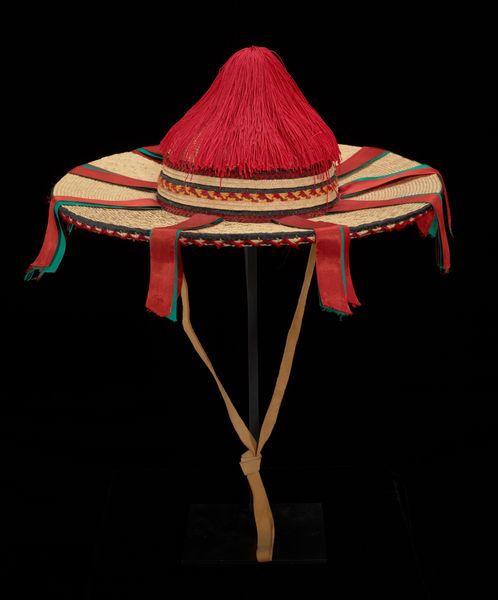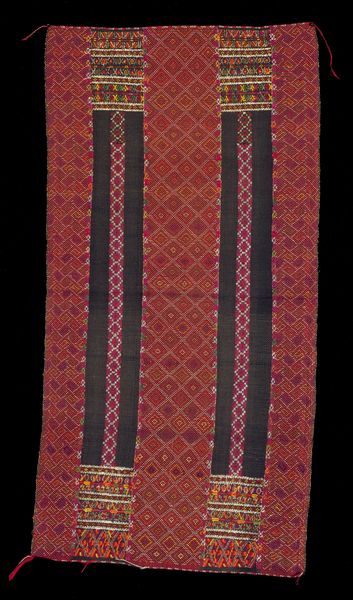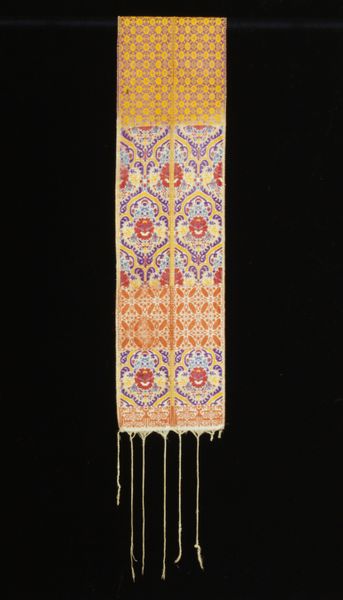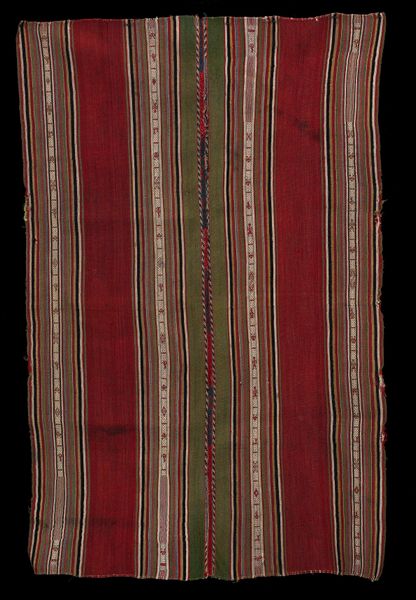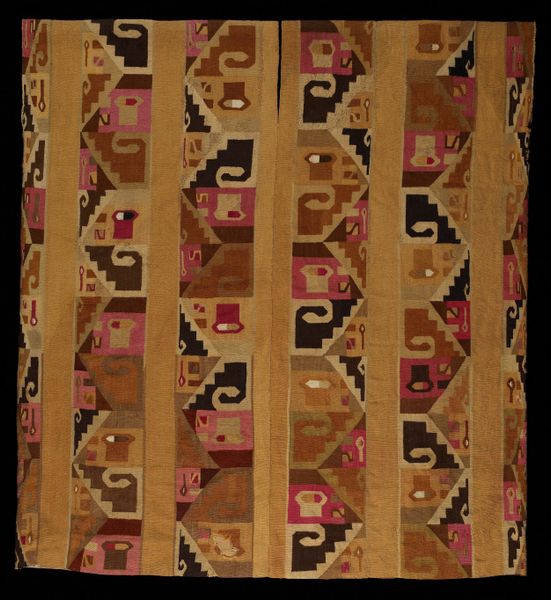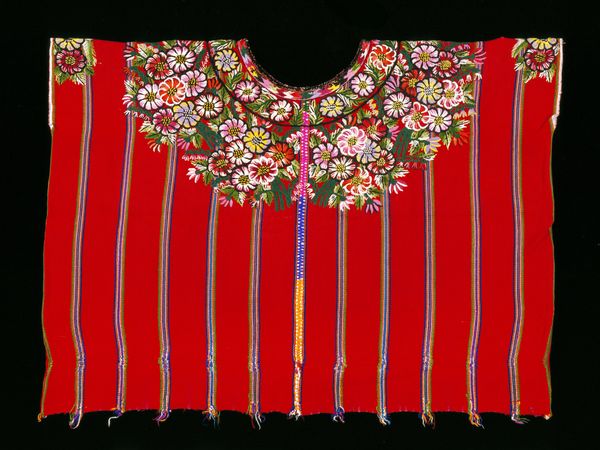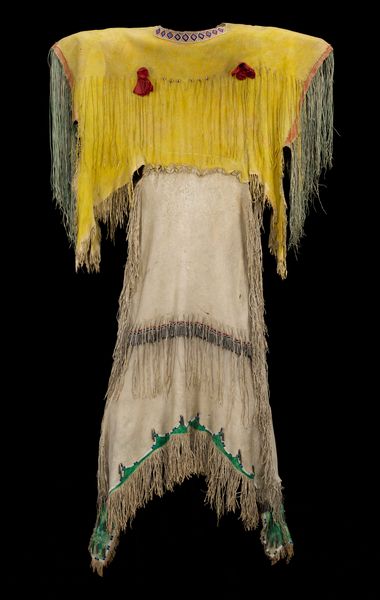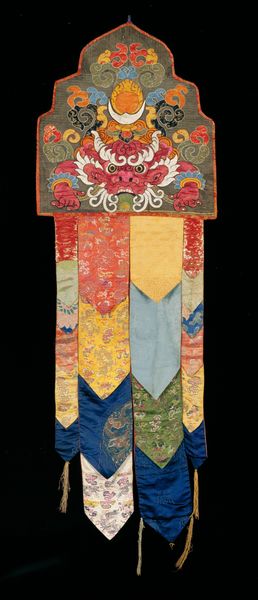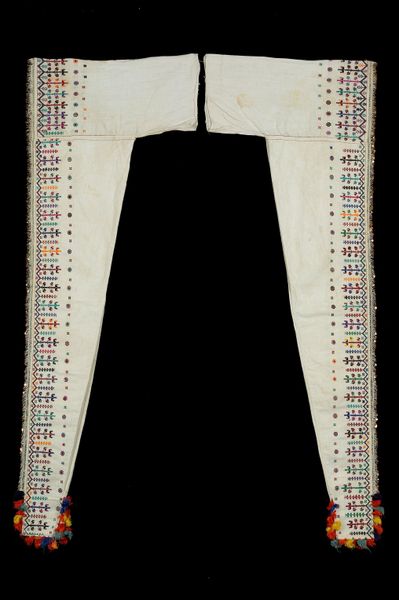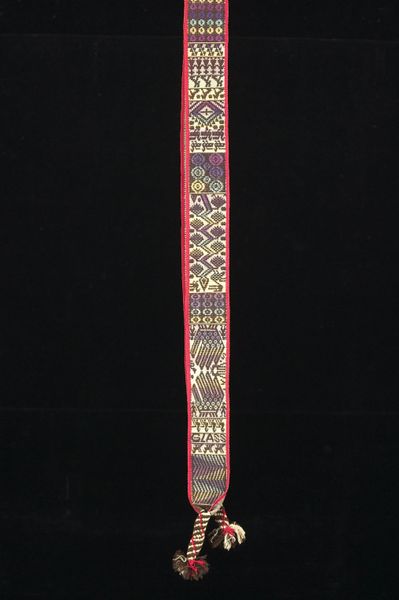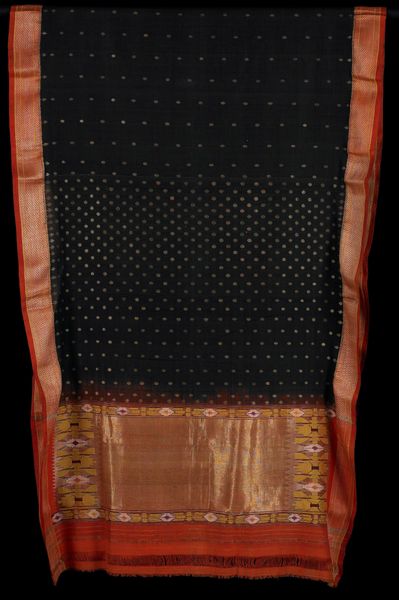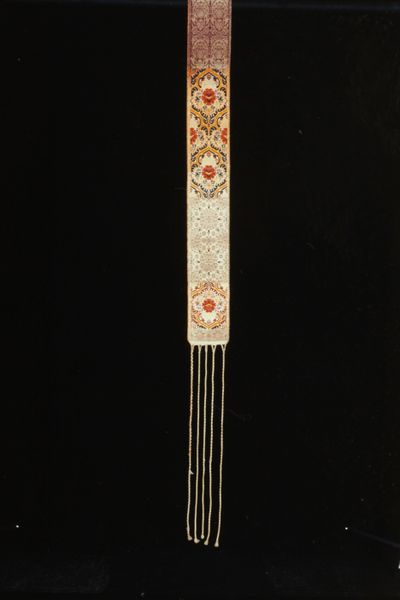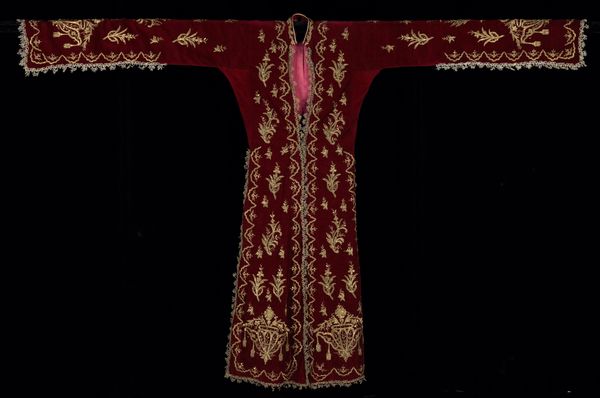
mixed-media, textile
#
mixed-media
#
textile
#
islamic-art
#
decorative-art
Dimensions: 25 1/4 × 7 11/16 × 8 1/4 in. (64.14 × 19.53 × 20.96 cm) (including back "tail")
Copyright: Public Domain
Editor: This object, called simply "Hat," dates from the late 19th to early 20th century and it's listed as mixed-media textile art. There's something very regal, almost architectural about it. What historical and social narratives are embedded in such a visually striking piece? Curator: That's a fantastic observation. It is imposing, isn't it? Beyond the sheer decorative beauty, it speaks to the social status and perhaps even the political power of the wearer. Consider the era: late 19th, early 20th century, a period of intense colonial activity across the Islamic world. How might this headwear function as a form of cultural resistance or assertion of identity against external pressures? Editor: That's an interesting point. It almost feels like armor, maybe a visual assertion of identity in a world that's trying to erase it. Curator: Precisely. Now, looking at the materials, the textile work combined with what looks like metalwork… How do these elements complicate the narrative of the piece? Are they locally sourced? Are they trade items? Editor: It makes me think about trade routes, cultural exchanges, maybe even unequal power dynamics between colonizers and local populations regarding resource control. Curator: Exactly. Objects like this are not just aesthetically pleasing; they're palimpsests of cultural encounters, laden with socio-political implications. We must look closely into whose artistry is celebrated in the finished work, and whose is forgotten? How is this art showcased, and what messages do its displayers and collectors send by celebrating its creativity? Editor: I see the "Hat" now as more than decorative art. I now consider that even what might at first seem to be decoration, or personal attire, could be an eloquent statement of community and identity. Curator: It certainly reveals the interconnectedness of art, identity, and power throughout history. I trust you found something new in today’s object, even one whose message is muted to our modern-day audiences.
Comments
minneapolisinstituteofart almost 2 years ago
⋮
This hat was made by people of the Turkmen cultural group of Central Asia in the later nineteenth or early twentieth century. It would have been worn by elite women as part of a traditional wedding ensemble. The hat combines many of the distinctive materials and techniques that are representative of the culture. The cut tassels, stamped metal plates, and use of carnelian are typical of Turkmen jewelry practices. It also integrates embroidered panels that are typical of the needlework traditions for which the culture is well known.
Join the conversation
Join millions of artists and users on Artera today and experience the ultimate creative platform.
